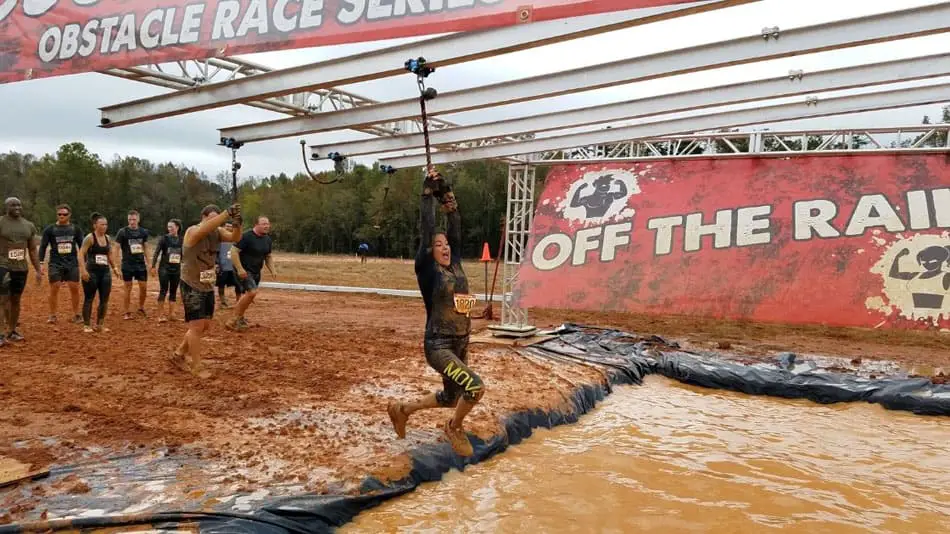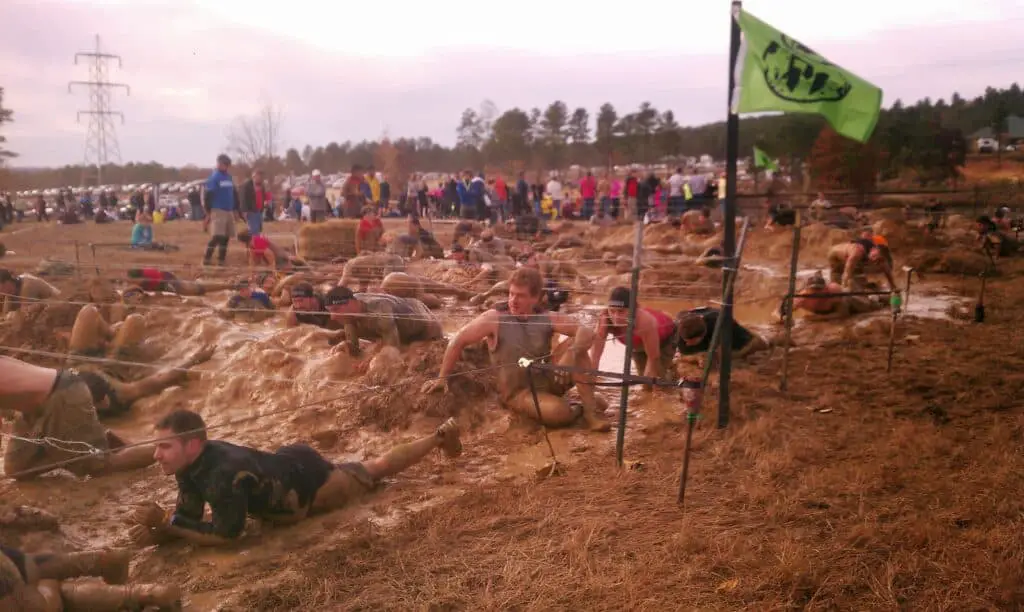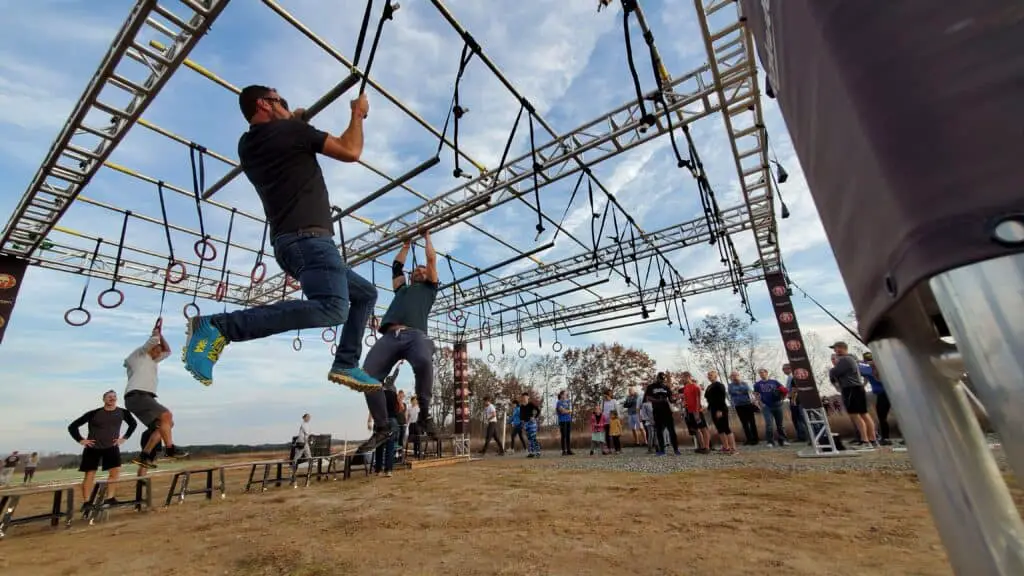You pulled the trigger and signed up for your very first mud run. Congratulations and welcome to the tribe of extreme sports enthusiasts.
Now, you are wondering what to expect in your first race. If you like surprises, do not waste your time reading this post. Because I am here to share with you what to expect on race day, so you are better prepared.
Having the right expectation to know what is coming your way will help you prepare and plan accordingly to be more successful and enjoy your mud run experience to the maximum.
Anticipate being challenged by the obstacles, the terrain, and at times by the weather. Depending on your fitness level, you might experience mild discomfort as you attempt to traverse through some of the obstacles. It is common to become passionate about mud runs.
After running and participating in multiple mud runs throughout the years, I am ready to share my own experiences to guide you to the best of my abilities. Keep reading and learn more about what’s coming your way as you participate in your first Obstacle Course Race.

- Terrain
- Running
- Mud
- Obstacles
- Water Crossings
- The Elements
- Exhaustion
- Climbs
The Terrain
You will find that most of the obstacle course races (OCR) aka Mud Runs are held in mountain settings or farms. Except, for example, the Spartan Stadium Series, which is held inside a team stadium.
I have never participated in these Stadium events, but I hear great things about them; maybe I will give them a try one day. But let’s focus on the mountain and open farm settings.
One of the “obstacles” unaccounted for is the terrain. You will be running or hiking on singletrack, rolling hills, and technical terrain. By technical terrain I mean, places where there are rocks, roots, and boulders. This type of terrain could be challenging, and it will slow you down.
From my experience, I have found that the Spartan Races and Tough Mudder are the two organizers who hold events in the tougher terrains. For example, I did the Spartan Ultra Beast in Vermont, which was beautiful and brutal terrain. So be prepared.
TIP: Train for time on your feet. These events can take twice as long as a race without obstacles.
Running
Let me be clear, running it’s not mandatory. You do not have to run; you could easily power-hike the whole race. Take your time and enjoy the moment. The goal in your first race should be to finish, do not worry about time.
If you decide to run, you will be stopping and going. On average, you run between a quarter to half a mile between obstacles before you have to run again. So, do not be worry about the running aspect.
TIP: If you started running. Start by walking for two minutes and then run for one minute. And progress from there.
Mud
Mud, mud, and more mud. Some people hate the mud, my wife included. Even though she is a tough trail runner, the idea of getting “dirty” is a turn-off. I understand, getting muddy is not for everyone.
Get over it!… This is one of the aspects that make these events so attractive. So, on race day, expect to get in the mud and try to enjoy it.
I will be honest with you. I have done races where there was “swamp” nasty smelly mud, but hey, you are there, and you are not going anywhere, so embrace it!
TIP: Make sure to tie up your shoes really well. Or you might lose them!

Obstacles
This part is somewhat obvious. But let me break it down for you and share some of the obstacles you should be expecting in your first obstacle race.
Hang in There
Monkey bars, hanging pipes, climbing holds, rings. They all have something in common. They are designed to kick your butt and to test your mind, grip endurance, core, coordination, and determination.
These obstacles are the hardest to complete for newcomers and even for seasoned participants. But do not worry, remember, this is your first race, have fun.
TIP: To get your upper body ready, start by “dead hanging from a pull-up bar. Hang on for 30 seconds, add a few seconds at a time as you get stronger. You could also do “jumping pull-ups” and slowly lower yourself.
Crawling Obstacles
Spartan has the barbed wire; the Savage Race has a pipe you have to crawl through; tough Mudder has its cargo net crawl. All of these obstacles require you to be on your hands and knees, especially on the barbed wire.
TIP: To be crawling ready, practice planks and bear crawls.
Get Over and Under
Be ready to climb over walls. All mud runs races have wall climbing obstacles at different heights, 4, 6, 8, and sometimes even higher. Rugged Manias has its “Warped Wall,” where you might need to find a helping hand to help you reach the top.
TIP: To reach those 8 foot high walls, you will need to jumping and pulling. Practice “depth jumps” to increase your chances of reaching the top. And your jumping pull-ups to work on your upper body.
Rope Climbs
You can muscle it up or use the “s-wrap” technic; either way, the goal is to climb the rope to hit the bell.
TIP: Find a rope, lay down flat on your back, and from this position, start pulling yourself up, arms only. Practice, also, the “s-wrap” technique.
Heavy Carries
60 lbs sandbags, buckets full of gravel, heavy logs, you will do it all. Depending on the mood of the organizer, you will be carrying these heavy “babies” for 1/4 mile to half of mile. So be ready.
Water/ Mud pits
My very first mud run race was the SC Spartan Beast in November. The very first obstacle we faced half of mile in was a water pit obstacle. At 36 F that cold morning, I thought to myself self- ‘ what did I get myself into. So we ran the rest of the 13-mile course wet and cold. It was awesome.
Water obstacles are in most of the mud run events. Some of the upper body obstacles, like monkey bars, will have you going across a pool of water. And if you fail the obstacle, guess what, you are going to get wet.

Water Crossings
Spartan and Tough Mudder are the two mud run event organizers, that include water crossing obstacles. Participants have to swim in a lake or river as part of the race. Sometimes these swims are mandatory and must be completed in order for you to keep going.
They do always provide PFD’s, and lifeguards in case you get into trouble. So even if you do not know how to swim, you can totally complete this obstacle.
Savage Race has its own water obstacle called “Davy Jones Locker” where the participant has to jump from a 15-foot high platform to a 15-foot deep water pool.
If you do not know how to swim and you are uncomfortable in the water, be careful with these water obstacles.
The Elements
You might not be thinking about this. But rain, snow, cold, and heat can affect your performance. Always be prepared; bring your own hydration pack with water, food, and a change of clothes if you need to.
When it comes to cold weather, I would recommend bringing a light jacket that you can easily place in a water-proof bag for later use. Remember, you will get wet, so wear light tactical clothing. Do not wear cotton, please.
Exhaustion
This is your first race; you are pumped, excited, and you rush out when you hear the whistle blow; I do not blame you; we all do it. Whatever strategy you follow is totally up to you. My only recommendation to you is to pace yourself.
If you do not pace yourself, you could be huffing and puffing before you know it. Remember that you are covering the distance of the race and think about the extra time on your feet and the additional effort you will spend on trying to complete all the obstacles.
So for a regular 5 k race, that might take me 22 minutes to finish. The same distance in an obstacle race has taken me 50 minutes to complete. So plan to be on your feet double the time that you normally would have in a normal race.
Stay Fit
Obstacle course races change my life, and I believe they can change yours. So, on race day, go out there and have fun, do your best, be your best. It will show you what you are capable of and the things that you can accomplish when you take action.

